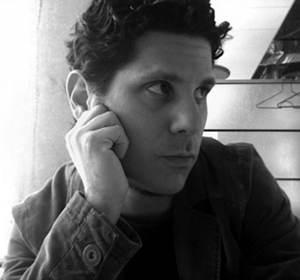Tell us about your role as Associate Creative Director Saatchi & Saatchi. What are your main responsibilities and how is your team structured?
It varies. When I first got to Saatchi I was put on a large project with a lot of teams of all levels working on it. Now I’m on a large project where it’s just my art director and me with no one beneath us. But I’m used to the shifts.
Talk us through some of your career milestones.
The adidas Cantina stands out. Selling the adidas Star Wars Collection by putting celebs like Daft Punk, Snoop, and David Beckham into the original Star Wars footage was really fun to make.
Another was Ice Cube Celebrates The Eames. It was done for Pacific Standard Time, a regional art show in Southern California. But that spot got press as far away as France, and was written up in the New York Times, too.
If you told me when I started in this business that I’d one day write a script for Ice Cube to read, I wouldn’t have believed you.
How would you describe the working culture at Saatchi & Saatchi?
I’ve worked at some shops where if you think beyond the deliverables list, you are wasting your time. Saatchi’s the opposite. They’re very encouraging here.
Faced with a challenging brief, where do you begin?
One brief I had amounted to nothing more than “do something cool.” When you get something that silly, it’s up to you to bug the account planner until they’re forced to flesh it out.
What are you working on at the moment?
One project is still in post-production, so I can’t talk about. But I will say it takes something boring and makes it exciting. I also like the fact the idea started with an event with all the content coming out of it.
If you had to select one campaign from your portfolio to tell our audience about, which one would it be and why.
It would be all the adidas Originals work I did the first year at Sid Lee. Not just Cantina, but the “Street Corner,” spot and the stuff we did for adidas partners like Courir. The amount of spots and content generated was staggering.
It was a year and a few months in the making. Stressful. Chaotic. Frustrating. And rewarding. It also proved if you allow creatives to do their thing with minimal intrusion, great work will be created.
We were one tight knit group, too. The guys and girls I worked with there were inspiring. It was a once in a lifetime moment you can’t recreate.
Who are some of the most creative minds you have ever worked with?
Too many to mention. I’m lucky in that regard.
Recently, John Kritch at Saatchi is brilliant.
Mariota Essery at Chiat is fantastic to work with.
Åsk Wäppling is a multi-threat because she can art direct as well as kick serious digital ass on the front and back end. How many digital creative directors do you know who can actually write code?
Simone Lagares is a Brazilian designer with more talent in one finger than three people together.
The people I’ve loved working with all share the same qualities: a wealth of talent, a passion for the work, a desire to keep their ego in check, and a desire to teach others. They also have a low tolerance for bullshit and righteous anger.
Where is the strangest place you have found inspiration?
Bootsy Collins. I was working on AT&T and they wanted a creative radio campaign.
The day I got the assignment I was listening to Bootsy Collins. And I thought what would happen if Bootsy, the outer space bassist, became the spokesman for AT&T? As soon as I found the Bootsy voice, there was no looking back. I’m still amazed the client bought it. I owe that Joe Schrack for selling it so hard.
You have won many awards throughout your career. Can you tell us about the accolade which you are most proud of and give us an insight into how the campaign idea came about.
Early in my career I worked on Peace Corps. The then client, Linda Isaac, was so smart and trusting and grateful for our work.
The campaign was for recent college graduates who were African Americans and Hispanics. We needed to create something that was sensitive to these communities. Explaining why they should give up two years and help another country instead of their own community was a challenge.
But the insight was solid: Helping someone “over there,” will help people “back here.” Experience travels with you.
We had Forest Whitaker as VO on a radio spot. “His Name Is Alive” donated one of their songs.
Soon after the radio spot aired I got an email from someone in New Haven, Connecticut. They said the spot inspired them to join the Peace Corps and they were going for their first interview that week.
Can’t get a better award than that.
What would your ideal brief look like?
Ideal briefs have a clear insight that inspires you to work immediately.
They are unicorn rare.
What you usually get is a pile of crap masquerading as a dog and pony show.
I once had a briefing at a Chinese restaurant to discuss a financial services brand. If the planners had just presented us a brief with a smart insight we would have done cartwheels.
But simple is hard. It requires more work. Less intervention. It requires the right talent and the right management. It’s a lot harder than ordering dim sum for twenty.







